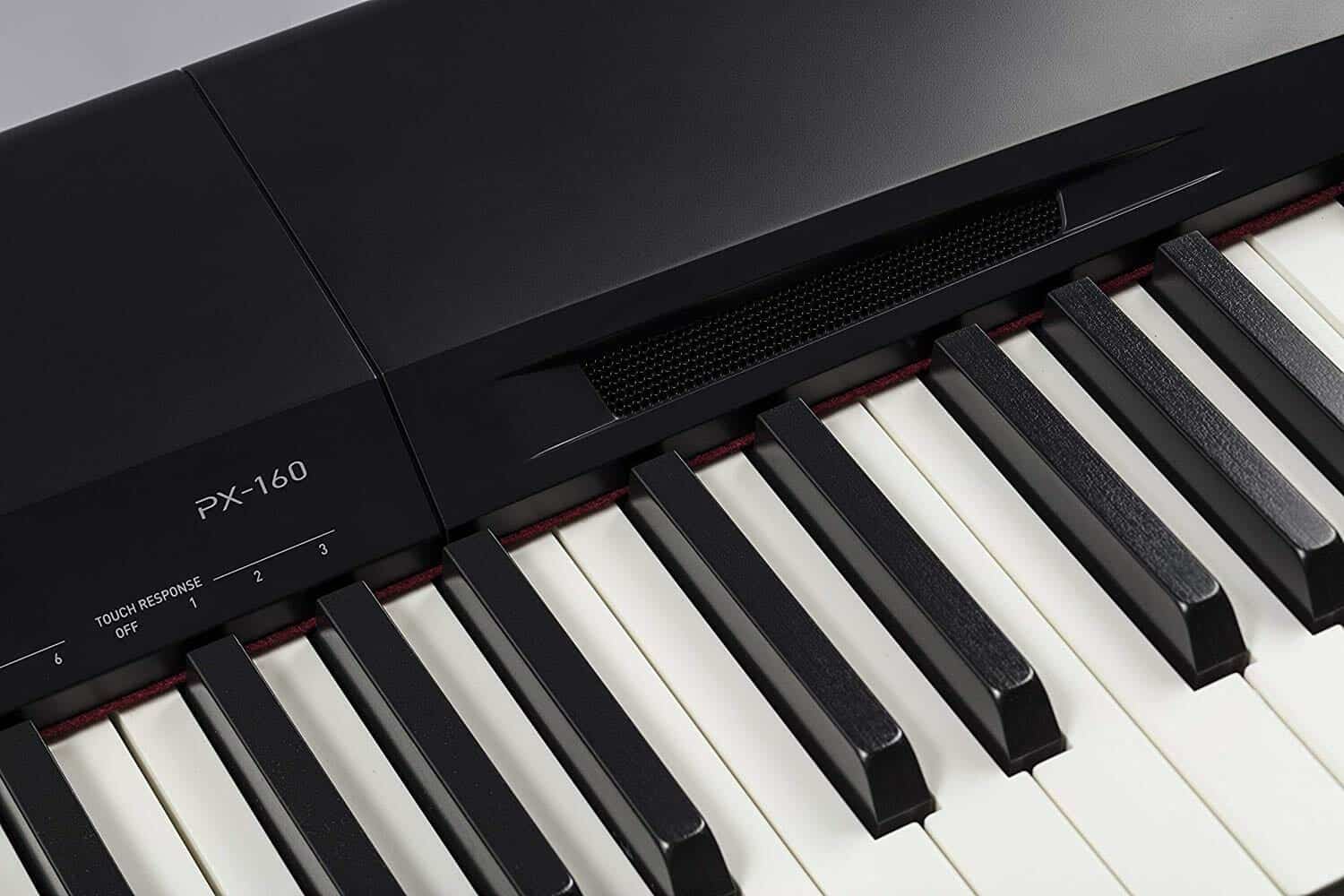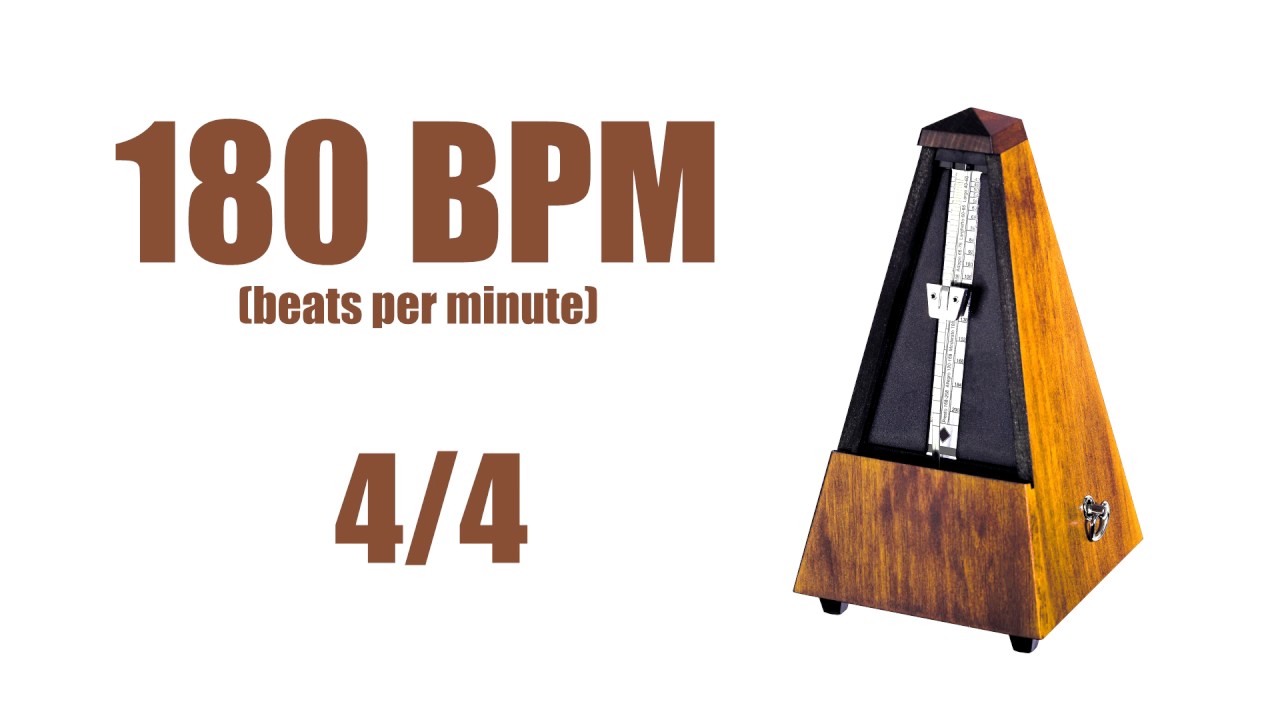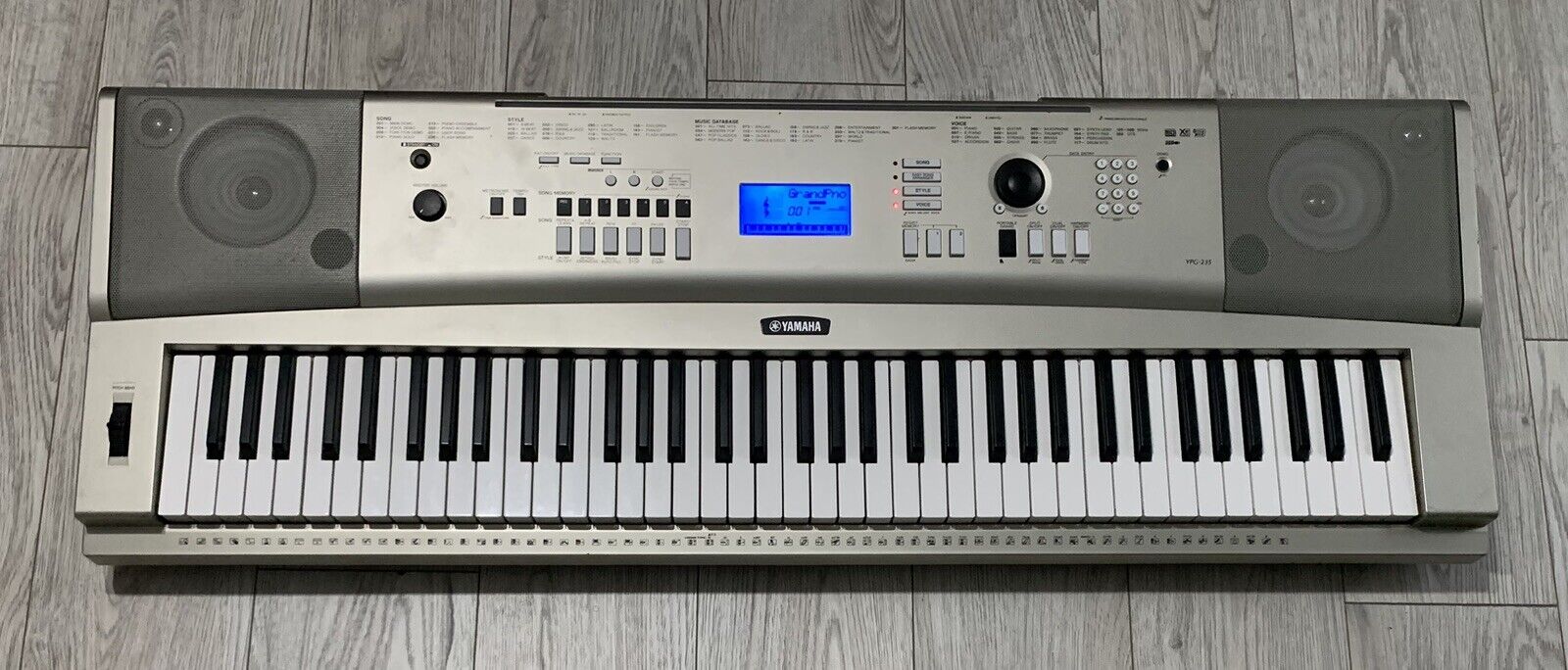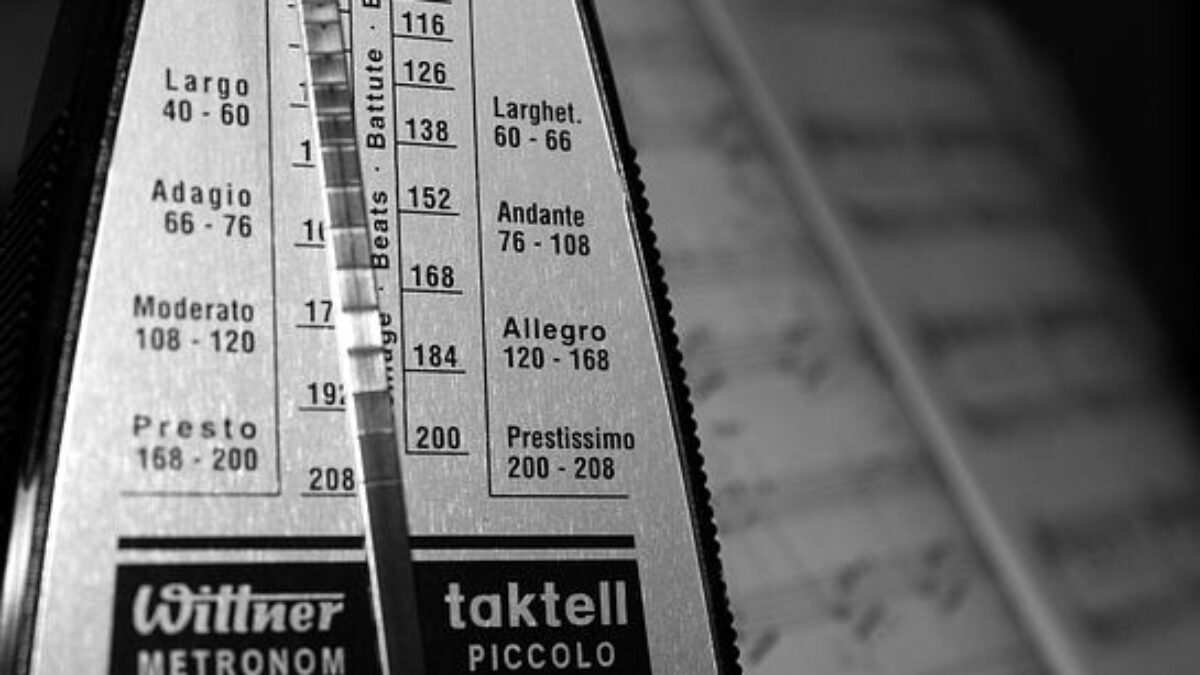Home>Production & Technology>Metronome>How To Set A Metronome For Triplets
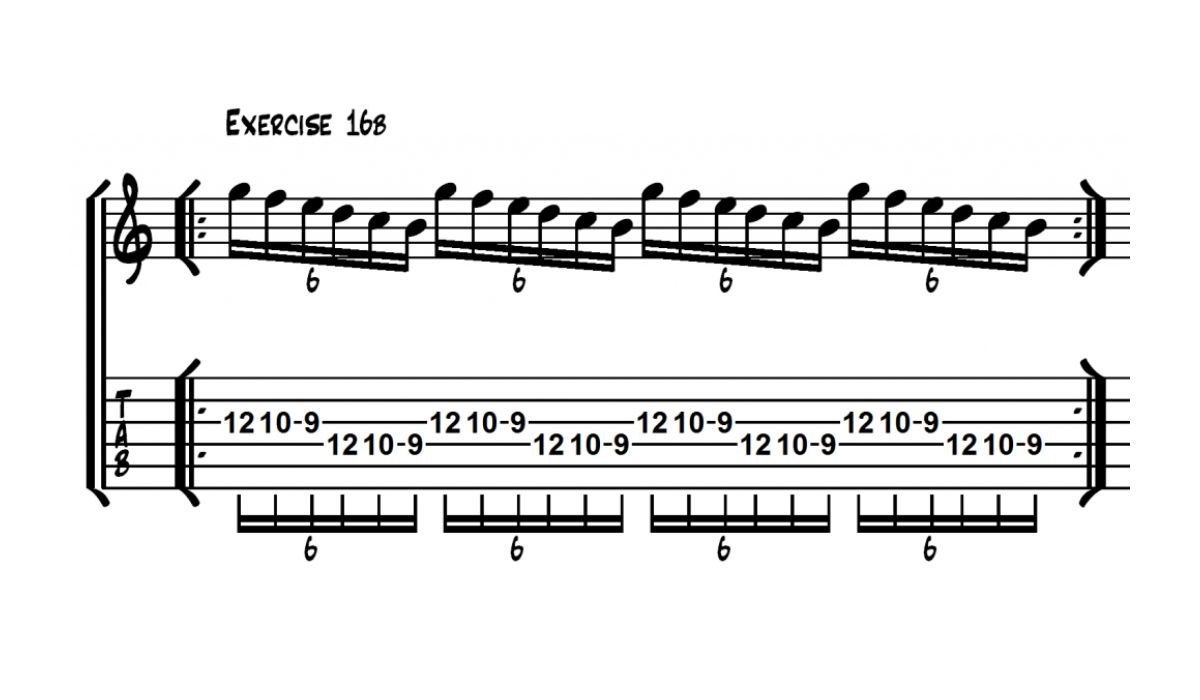

Metronome
How To Set A Metronome For Triplets
Modified: January 22, 2024
Learn how to set a metronome for triplets with these easy steps. Enhance your musical timing and precision with the help of a metronome.
(Many of the links in this article redirect to a specific reviewed product. Your purchase of these products through affiliate links helps to generate commission for AudioLover.com, at no extra cost. Learn more)
Table of Contents
Introduction
Welcome to the world of music and rhythm! If you’re a musician, you probably know how important it is to have a sense of timing. That’s where the metronome comes in. A metronome is a powerful tool that helps musicians stay in time and maintain a steady tempo.
In this article, we’ll be focusing specifically on setting a metronome for triplets. Triplets are a rhythmic pattern where three notes are played in the space of two. They add a unique feel and groove to music, and being able to play them accurately is essential for any musician.
Setting a metronome for triplets can be a bit challenging, especially if you’re new to the concept. But don’t worry, we’ll guide you through the process step by step. By the end of this article, you’ll have a clear understanding of how to set your metronome for triplets and be able to practice with confidence.
So, whether you’re a drummer, guitarist, pianist, or any other type of musician, let’s dive in and explore the fascinating world of triplets!
Understanding Triplets
Before we dive into setting the metronome for triplets, it’s important to understand what triplets are and how they work.
In music, a triplet is a rhythmic subdivision where three notes are played in the space of two notes of the same duration. This means that each note in a triplet is given equal time value, but the three notes together take up the same amount of time as two regular notes.
For example, if you have a quarter note, which normally lasts for one beat, in a triplet, each of the three notes in that triplet would have a duration of one-third of a beat. This generates a distinct “triplet feel” and adds a sense of complexity and groove to the music.
It’s important to note that triplets can be applied to different time signatures, such as 4/4, 3/4, or even 7/8. Regardless of the time signature, the concept of triplets remains the same – three evenly spaced notes played within the timeframe of two regular notes.
Triplets are typically notated with a bracket and the number 3 above or below the notes. This helps to distinguish them from regular rhythms and ensures that the performer understands the specific timing required.
To better understand triplets, it can be helpful to listen to music that makes use of them. Jazz, blues, and funk genres often incorporate triplets in their rhythms, creating a distinctive and dynamic sound.
Now that we have a solid understanding of what triplets are and how they function, let’s move on to the next step – choosing the right metronome tempo for triplets.
Choosing the Metronome Tempo
In order to play triplets accurately, it’s crucial to choose the right tempo on your metronome. The tempo refers to the speed at which the metronome clicks or ticks, providing a steady beat for you to play along with.
When it comes to triplets, the tempo you choose will greatly depend on the style and genre of music you are playing. Different musical genres have different typical tempos, so it’s important to consider the context in which you are playing.
For example, in jazz or blues music, a common tempo range for triplets could be anywhere between 120 to 160 beats per minute (BPM). This tempo range provides a moderate to fast-paced groove that allows for the triplet notes to flow smoothly.
On the other hand, if you’re playing a slower ballad or a classical piece, the tempo for triplets might be lower, ranging from 70 to 100 BPM. This slower tempo allows for more space and expression between the triplet notes.
Ultimately, the tempo you choose should feel comfortable for you to play along with. It’s important to experiment and find the tempo that suits your playing style and musical preferences.
Once you’ve chosen the desired tempo, set your metronome to that value. Most modern metronomes have adjustable BPM settings, allowing you to easily match the tempo you want to practice with.
In addition to the tempo, some metronomes also offer features such as accenting the first note of each triplet or providing a visual cue. These features can be beneficial in helping you grasp the rhythm and internalize the flow of triplets.
Now that we have the metronome set to the appropriate tempo, let’s move on to the next step – setting the metronome for triplets.
Setting the Metronome for Triplets
Now that we have the metronome set to the desired tempo, it’s time to configure it to accurately represent triplets. Setting the metronome for triplets will ensure that you have a clear and consistent rhythmic reference as you practice.
Most metronomes have a variety of time signature settings. For triplets, the most common time signature is 4/4. However, triplets can also be played in other time signatures, such as 3/4 or 6/8.
To set the metronome for triplets in a 4/4 time signature, you’ll want to imagine the click of the metronome as representing two regular beats. This means that the metronome will tick every two quarters notes, giving you the underlying pulse of the music.
Within each of those regular beats, you’ll play three evenly spaced triplet notes. So, mentally divide each of the metronome clicks into three equal parts. You can think of it as saying “trip-let, trip-let” to yourself as the metronome ticks.
If you’re playing in a different time signature, such as 3/4, you’ll adjust the metronome accordingly. In this case, each click of the metronome will represent the first note of a triplet, and you’ll count “one, two, three” for each measure.
As you practice with the metronome, it’s important to pay attention to the subdivision of the triplets and ensure that each note is played evenly. This will help you develop a solid sense of timing and groove.
Remember, the main purpose of setting the metronome for triplets is to provide you with a consistent rhythmic reference. It’s crucial to practice with the metronome regularly and gradually increase the tempo as you become more comfortable and proficient.
Now that we’ve covered how to set the metronome for triplets, let’s move on to the next section – practicing with the metronome.
Practicing with the Metronome
Now that you have your metronome set to the correct tempo and configured for triplets, it’s time to put it to use in your practice sessions. Practicing with the metronome will help you develop a strong sense of timing and improve your accuracy when playing triplets.
When practicing with the metronome, it’s essential to start at a tempo that you feel comfortable with. Begin by playing simple exercises or scales using triplets. Focus on playing the triplets evenly and in time with the metronome clicks.
As you become more comfortable, gradually increase the tempo of the metronome. Be patient with yourself and allow your muscle memory to develop. It’s better to play the triplets accurately at a slower tempo than to rush and sacrifice accuracy.
Another effective practice technique is to play the triplets at different dynamic levels. Start by playing softly and gradually increase the volume as you progress. This will help to develop control and consistency in your playing.
You can also experiment with different articulations and accents within the triplets. Try emphasizing the first note of each triplet while keeping other notes softer. This will help to bring out the distinct rhythm and add more expression to your playing.
It’s important to practice with the metronome regularly, but also intersperse it with practicing without the metronome. This will allow you to develop a natural sense of timing and groove, while still maintaining accuracy and synchronization when playing with the metronome.
Remember to stay focused and engaged during your practice sessions. Use the metronome as a tool to keep you accountable and strive for constant improvement. Don’t be afraid to challenge yourself by practicing different rhythms, playing along to songs, or improvising with triplets.
By practicing with the metronome consistently, you’ll gradually build confidence in playing triplets and develop a solid rhythmic foundation that extends beyond triplets alone.
Now that we’ve covered practicing with the metronome, let’s move on to some additional tips and tricks for playing triplets.
Tips and Tricks for Playing Triplets
Mastering the art of playing triplets takes time and practice. Here are some tips and tricks to help you improve your skills and make playing triplets feel more natural:
- Subdivide the beat: Instead of thinking of triplets as three separate notes, try to divide the beat into three equal parts. This will help you internalize the rhythm and play the triplets more accurately.
- Start slow and gradually increase the tempo: Begin practicing triplets at a slower tempo, focusing on playing them evenly and accurately. As you become more comfortable, gradually increase the tempo to challenge yourself.
- Count out loud: Vocalizing the rhythm by counting out loud can be a helpful technique. Say “1-trip-let, 2-trip-let, 3-trip-let, 4-trip-let” as you play the triplets. This will reinforce the subdivision and improve your sense of timing.
- Practice with different note durations: Start by practicing triplets with quarter notes, then move on to eighth notes, sixteenth notes, and so on. This will improve your rhythmic versatility and make playing triplets in different contexts easier.
- Record yourself: Use a recording device or app to record your practice sessions. This allows you to listen back and identify any inconsistencies or areas for improvement. It’s a valuable tool for self-assessment and tracking your progress.
- Play along with recordings: Listening to and playing along with music that features triplets can greatly enhance your understanding and feel for the rhythm. It will also expose you to different musical styles and interpretations of triplets.
- Experiment with dynamics and accents: Vary the dynamics and add accents to different notes within the triplets. This will bring out different nuances and add expressive elements to your playing.
- Use a variety of techniques: Explore different techniques such as fingerpicking, palm muting, or strumming patterns to create interesting rhythmic variations with triplets.
- Practice with a metronome in different subdivisions: While setting the metronome for triplets is important, it can also be beneficial to practice with the metronome clicking on different subdivisions, such as eighth notes or sixteenth notes. This will improve your overall sense of timing and rhythmic precision.
Remember, consistent practice and patience are key to mastering triplets. Be sure to take breaks when needed and approach your practice sessions with a positive mindset. Enjoy the process and celebrate your progress along the way!
Now that we’ve explored some valuable tips and tricks, let’s wrap up this article.
Conclusion
Congratulations! You now have a solid understanding of how to set a metronome for triplets and have learned valuable tips and tricks to improve your ability to play them. Remember, mastering triplets takes time, practice, and patience. By incorporating the metronome into your practice routine and following the techniques we’ve discussed, you’ll develop a strong sense of timing and groove.
Start by understanding the concept of triplets, where three evenly spaced notes are played within the space of two regular notes. Choose the appropriate tempo for your musical genre and set your metronome accordingly. Focus on subdividing the beat and playing the triplets evenly in time with the metronome’s clicks.
As you continue to practice, gradually increase the tempo, experiment with dynamics and accents, and explore different techniques to add variation to your triplet playing. Occasionally record yourself and play along with recordings to assess your progress and gain exposure to different musical styles and interpretations.
Remember, practicing with a metronome is just one aspect of improving your overall musicality and rhythmic skills. Experiment with different rhythms and styles, play along with a variety of music, and challenge yourself with new techniques to expand your musical horizons.
Keep in mind that playing music is not only about technical accuracy but also about expressing your creativity and emotion. Use the metronome as a tool to build a strong rhythmic foundation, but don’t forget to let your musicality shine through.
So, go ahead, set that metronome, and let the triplets groove! Enjoy the journey of mastering this exciting rhythmic pattern and watch as it adds depth and complexity to your musical performances.


